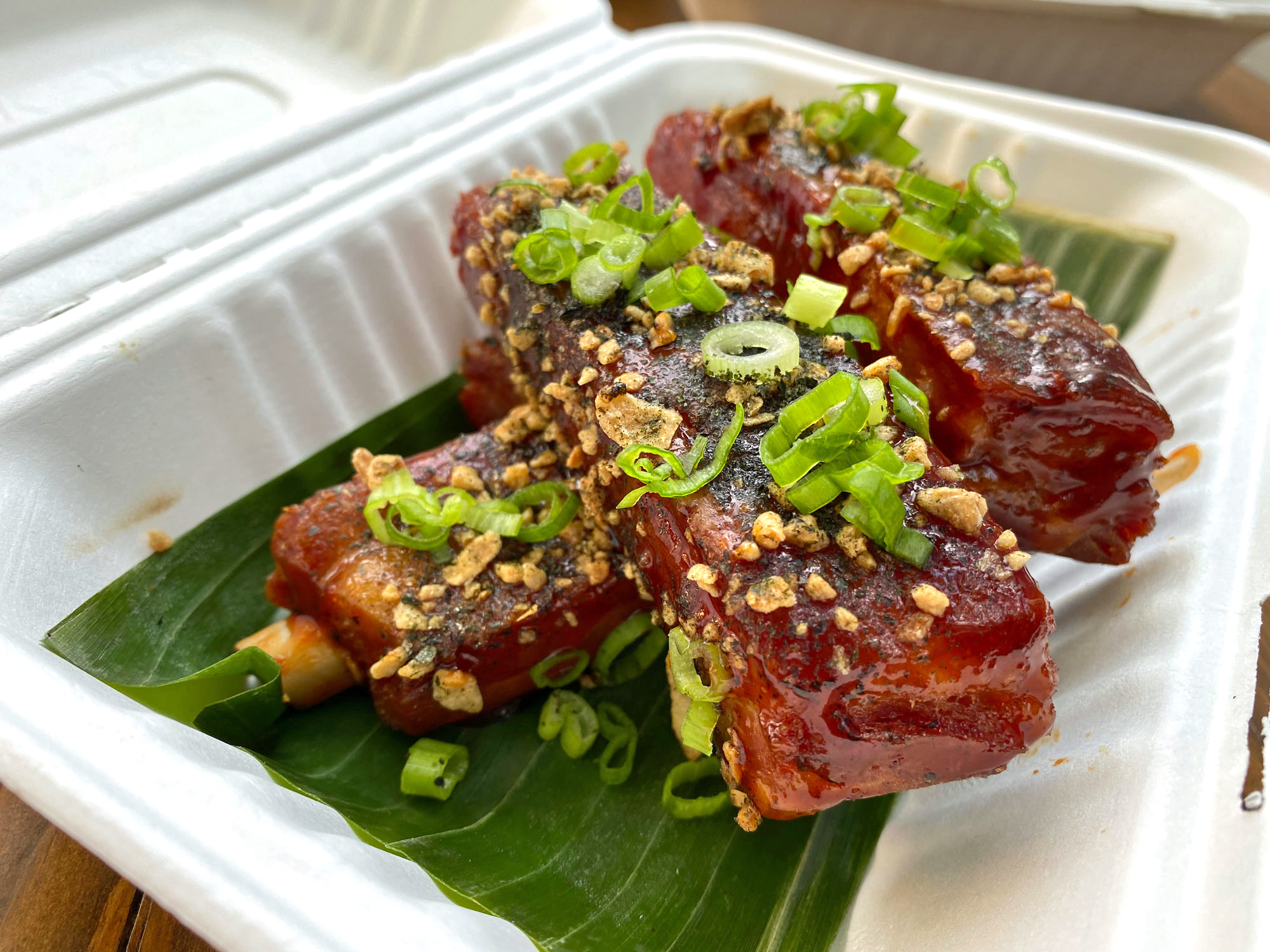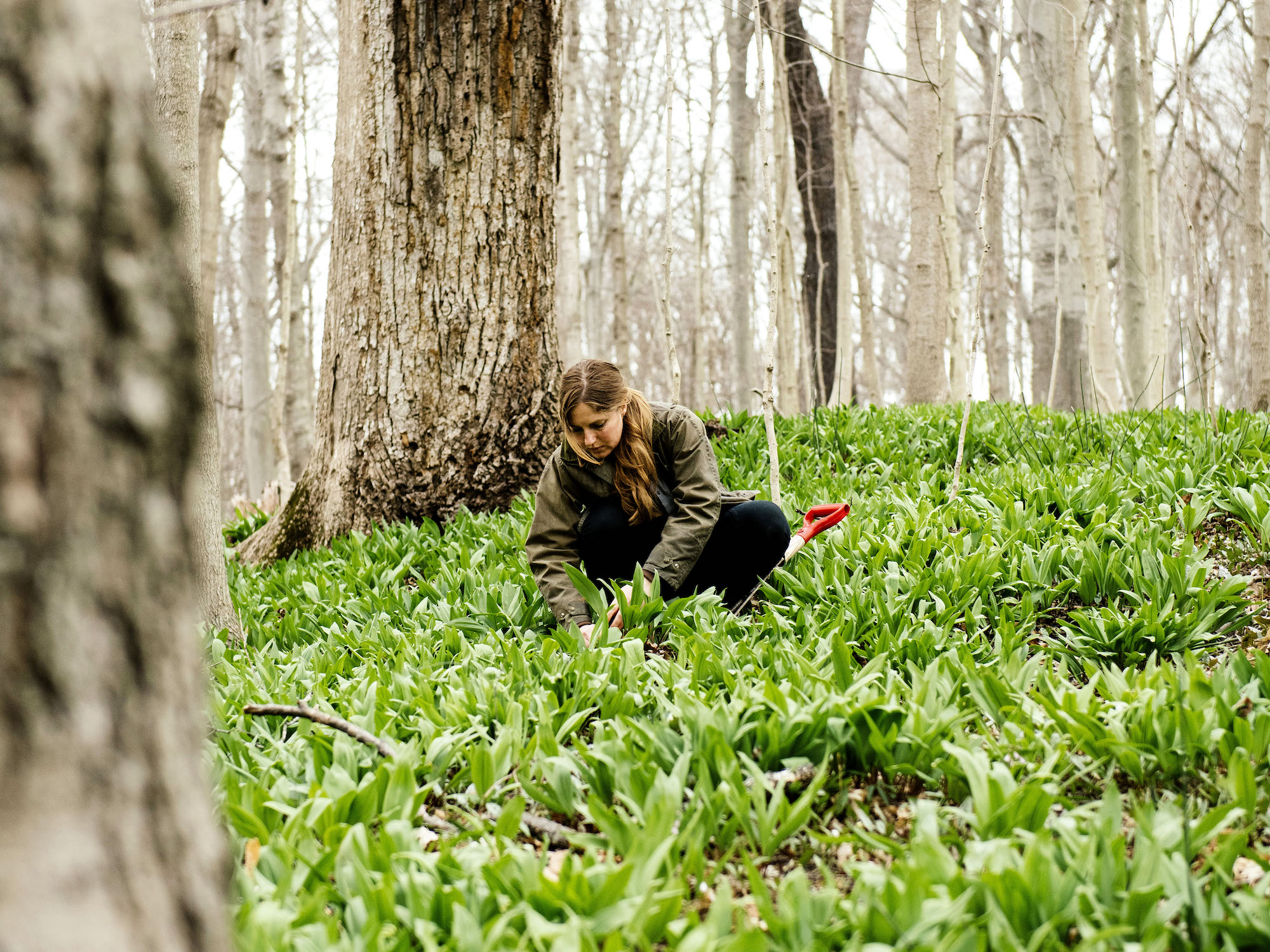LOCKDOWN IS NEARING ITS END and we’re approaching being able to go to restaurants and not having to subsist on home-cooked meals and delivery food. Or will we?
For a number of reasons, I feel like the last year marked a definite shift for me toward more home cooking, and healthier cooking. I still love restaurants but they are the cherry on the sundae for me now; rather than start scanning GrubHub or Tock, it’s just become normal to grab a piece of fish I cleverly made sure to pick up a day or two before and whip it up with some vegetables for dinner. Or to crack open a cookbook—so many I had barely seen the insides of until this past year!—and hit one of my local markets to acquire the provisions needed to explore another culture.
A couple of years ago I did a guide to the variety of local markets in the region—everything from butcher shops to bakeries and grocery stores allied with different immigrant cultures. It’s still a good list (very little on it has changed; I deleted two spots that have closed) but this list has a different motivation. I call this “Cultural Grocery Shopping,” because what I’ve been trying to do this year is become more comfortable with other ways of cooking. With thinking like the people from another place, who approach cooking with a whole different set of basic ingredients in their heads, and structure a meal a different way (not the protein and fries or salad way of so many American meals). In a year when there were few sources of entertainment out of the house for us, going past my local Whole Foods or Mariano’s and discovering the real diversity of food suppliers in our city, and then bringing it all home to fix myself, was about the only entertainment I had that wasn’t on Netflix.
It must be the broadest feta selection in America, and makes me want to learn more ways to use feta so that I can develop opinions about which ones to use for what purpose.
My regular stops are mostly what sometimes get called “ethnic” markets, though usually that means multiple cultures, and sometimes so many that they represent most of the world, besides America. For that reason it’s not upscale American markets, the Plum Markets and Foxtrots of the world—I like some of those places, but how they differ is that they find quirky little artisan brands of finished products—giardiniera, hot sauces, baked goods—you wouldn’t see at Jewel. The places I have visited the most are mostly about raw ingredients you wouldn’t see at other grocery stores, or know what to do with if you did. The sweet spot seems to be a local chain of three or four stores—big enough to have some buying power, small enough to be tightly connected to their audience in Chicago.
Note that I don’t say anything about which stores have the best deals on this or that item; the fact is, almost invariably these places are more affordable than chain stores, and none of them have the loyalty cards that let them jack blueberries up to $5.99 and then give you a discount with card back to $4.99; blueberries are already just $3.99 as it is. They’re also blissfully free of online shoppers clogging the aisles shopping for other people, and none of them have the automated checkout systems that invariably accuse you of pulling a fast one if you don’t bag things just so. All of them offer an old-fashionedly human-scaled shopping experience. Try it, you just might like it!
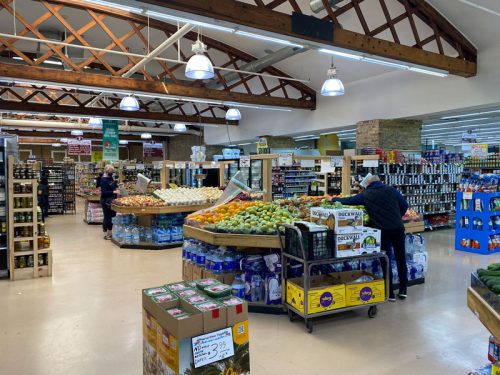
HarvesTime Foods
Address: 2632 W. Lawrence
Strengths: Produce, Eastern European foods, artisan sausages
Owned by the same owners as Edgewater Produce and located on the same block as Goosefoot, this looks like many multiply-ethnic markets in town, though the solar panels on the roof are unique. And there are giveaways—like the cartons of eggs with handmade labels applied by the farmer—that this one is playing a deeper game of sourcing local midwestern produce and still selling it at neighborhood store prices. The produce section is first-rate, gleaming unblemished fruits and vegetables overlaid with the scent of the chickens rotisserie-cooking nearby. The packaged goods include a lot of Eastern European things—more varieties of the red pepper condiment ajvar or purple pickled cabbage than you thought there could be—while the meat case includes a number of artisan sausage lines like the local Chef Martin brand. Get to the end, and the bread section offers you fresh crusty D’Amato bread and El Milagro tortillas.

Surprise find: In the corner by the freezer case, where the spices are, there’s a section of dried herbs for making tea. I grab a bundle of dried oregano and keep it to crush by hand and sprinkle over things I’m cooking.

Super HMart
Address: 801 Civic Center Dr., Niles
Strengths: Produce, seafood, Asian ingredients
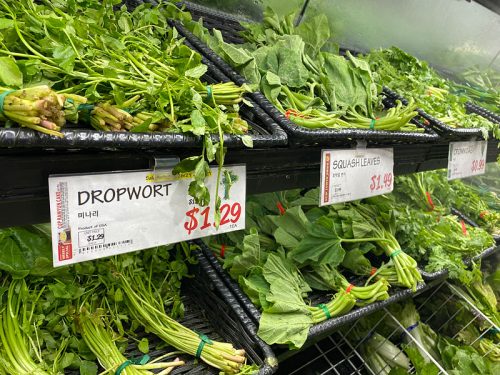
Korean grocer HMart—which now has four locations in Chicagoland, one downtown and others in Niles, Glenview, and Naperville—should be familiar to people who keep up with food media; it arrived with a splash several years ago offering abundant produce, meat and seafood choices, comprehensive selection of Asian packaged goods and, like Mitsuwa in Arlington Heights, a quirky array of side businesses in the rental spaces around the grocery store. For me, it became a regular spot when I decided to finally use those Japanese cookbooks I kept buying. So a typical HMart excursion might mean coming back with bonito flakes and kombu for making my own dashi, or yam noodles in place of carb-heavy pasta, to go with Berkshire pork already cut into sukiyaki-style strips, and firm tofu.
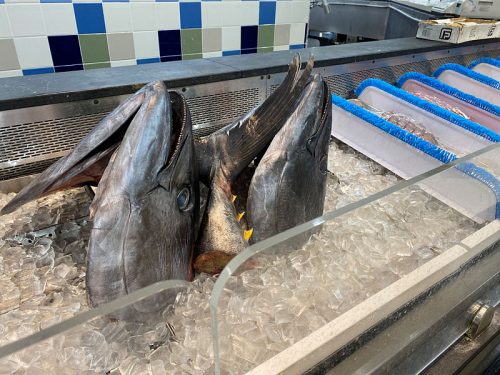
Or it might simply mean stocking up on everyday stuff—you can do that, too! Nothing wrong with just grabbing some asparagus to serve alongside the pre-marinated galbi beef for Korean BBQ. But every time I go I try to find something new I haven’t tried, let alone cooked with, before.
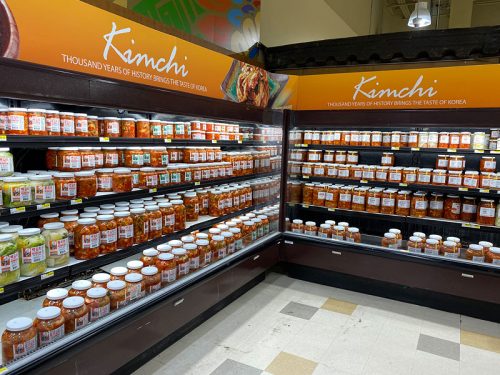
Surprise find: Always check the specials piled up as you walk in the door—interesting stuff you may never see again. I got some great little Korean tupperware-style containers for leftovers (should have bought twice as many), and one time some Calamansi-flavored soda my kids really liked.

Angelo Caputo’s Fresh Markets
Address: 2400 N. Harlem Ave., Elmwood Park
Strengths: Produce, Italian goods, bread
Forget the rest of the store if you want—Caputo’s in Elmwood Park has the best produce section in the city, attested to by all the grandmas carefully picking through rows and rows of artichokes, rapini, figs and other things you didn’t grow up eating unless your gram was from the old country, too. And it’s not just Italian greens, either—as the picture below shows, it’s foods from all over the world.
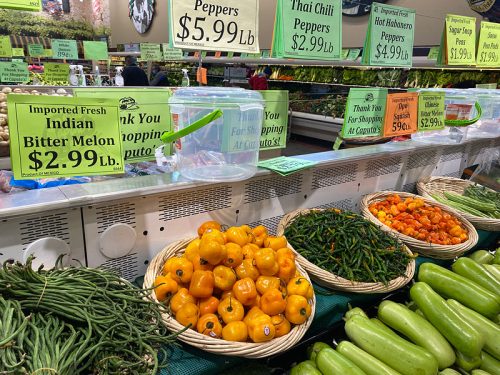
Just inside the door there’s also a fantastic selection of nuts and dried fruit—grab some muscat raisins and some pine nuts to go with the pound bag of fresh spinach you’re about to acquire, and make a side of spinaci con pinoli e passerine. And don’t miss the delicately perfumed candied Thai strawberries.
The fish and meat sections are decent, the deli case is better and has things like housemade seafood or artichoke salad, and don’t miss the aisle of pasta and canned tomatoes—I always stock up on real bucatini, not just spaghetti, for making bucatini all’amatriciana. There’s a pretty good cheese selection (though for a more serious one, you want the Caputo’s Cheese Market in Melrose Park), and a bakery section with crusty breads from places like Vesuvio Bakery in Riverside. But I pick Caputo’s when I want to fill the vegetable drawer with more than the usual.
Surprise find: at the far end of the store there’s a pastry counter with things like cannoli, Black Forest Torte and sfogliatelle, quite good and very reasonably priced when you want to bring home a treat.
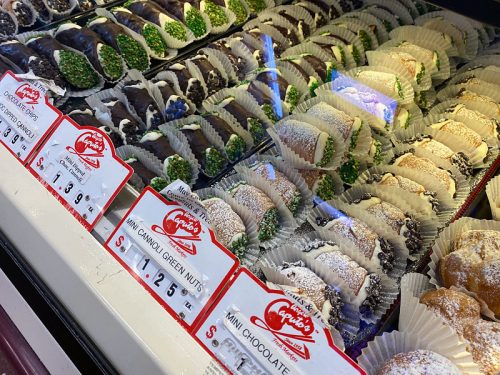
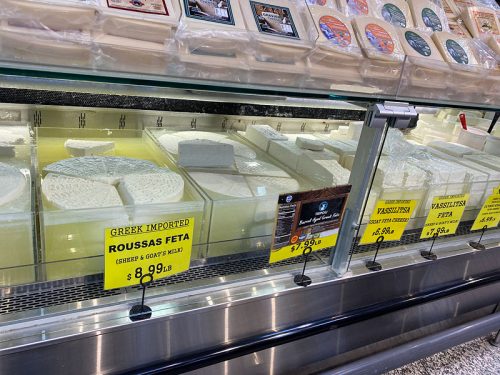
Fresh Farms
Address: 5740 W. Touhy, Niles
Strengths: Produce, Eastern European food, fish, feta cheese, baked goods
Many stores could vie for the title of United Nations of Grocery Shopping but the champion, to me, is the Niles outlet of a local three-store chain. You can see why just walking down the center section and looking at the signs—there’s a row of Italian foods, a row of Eastern European foods, a Greek row, a Russian row, a (northern) European row, an Hispanic row, and even then you won’t have seen it all until you travel a labyrinthine path around the freezer section and find the Indian section hidden at its heart. (I didn’t even know that existed until my third or fourth visit.)

The produce section is abundant and piled high, spilling out into the entrance to the store, and then you hit my favorite fish counter in the city, customers crowded like stock brokers around the guy wrapping and weighing fillets to order. The quality is always extremely high; I’ve never been disappointed. Continue on and there’s a deli counter and cases loaded with Eastern European sausages, and then a case of prepackaged feta cheese and a counter of blocks of feta in water. It must be the broadest feta selection in America, and makes me want to learn more ways to use feta so that I can develop opinions about which ones to use for what purpose. Then past the aisles of every part of the world, and to the dairy section—again, can there be more kinds of kefir in one place in America? Hard to imagine, and around the corner to the baked goods section, where there’s a remarkable variety of Eastern European breads and middle eastern pita and lavosh, plus fresh-baked bureks and prepared foods.

Being up in Niles, the shoppers here are a tough crowd of sharp-elbowed Korean and Russian grandmas and the like, who don’t mess around; careful walking from the parking lot, and don’t block a produce aisle to catch up with an old friend. Know what you want and head straight for it, and you’ll have a great experience.

Surprise find: Still on the waiting list for the Rancho Gordo Bean Club? There’s a cool line of artisan dried beans from Greece in the Greek aisle. They’ll make a nice white bean salad.
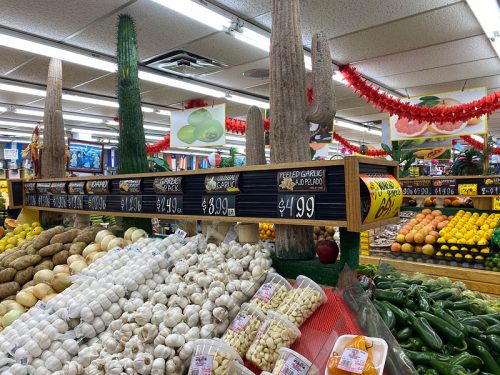
Armitage Produce
Address: 3334 W. Armitage
Strengths: Latin American specialty items
I didn’t call out a specific Mexican market in the city because that’s easy; any Cermak Produce or Tony’s will do you just fine for Mexican herbs, crema, packages of El Milagro tortillas still warm in the bag, Oaxacan cheese (which is vastly better than what you could get here a few years ago) and preseasoned taco meat. I’ve never felt the need to travel far to check out the ones I’ve heard are really good (like Supermercados Morelia in Rogers Park). Mexican-flavored markets like these aren’t a trip out of Chicago—they are Chicago.
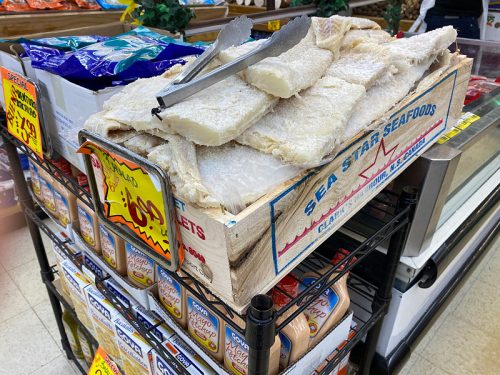
But Puerto Rican? Get ready for some stuff the gringos don’t see every day. I mean, how often have you seen bacalao, salted cured codfish, just sitting out (unrefrigerated) in the produce section in wooden boxes? Now you’re talking an out-of-Chicago experience. This tiny, maze-like store just a few blocks west of hipster spots like the Scofflaw and Giant is a hallucinatory deep dive into Puerto Rican and Latin American mysteries. What makes Venezuelan crema different from other countries’? I’d heard of culantro, but wasn’t sure if it was just another way of spelling cilantro (it’s not, it’s an herb of its own character and found here). What’s with the big jar of Chicago seasoning that appears to be all chile peppers? (Doesn’t look like giardiniera to me.) These questions will only be answered with buying and cooking.
Surprise find: Sour oranges, a type of orange typically used to marinate meat in dishes like pernil (roasted pork shoulder); most recipes tell you how to fake it with orange and lime juice, but they have the real thing here as well as sweet limes, a less acidic hybrid common in India (not sure how it ended up here).
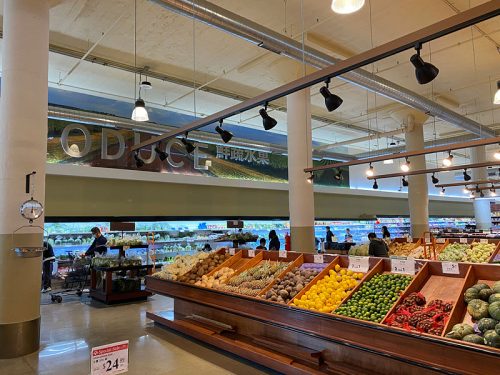
88 Marketplace
Address: 2105 S. Jefferson St.
Strengths: Asian foods, seafood, noodles, Asian snacks
One of the newest grocers in town, a vast and spacious Asian market located to the west of Chinatown, 88 Marketplace is admittedly not one of my regular stops as it’s a long ways from my home. But it is the newest example, for me, of exploring a new market and seeing what you find to eat along the way.

Skewed toward Chinese shoppers, you can see that in the produce section—rows upon rows of green leafy vegetables like bok choy and choy sum—and especially in the seafood section, which has probably the best fresh shellfish selection in the city, laid out like it’s an open-air market in China. But there are lots of Japanese snacks with cartoon mascots, and the food stands inside include a sushi counter, a Hong Kong-style counter with hanging BBQ duck, and a Korean bibimbop stand.
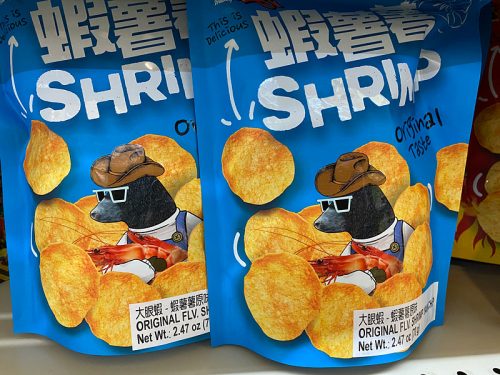

There are sections that are surprisingly deep—like preserved duck eggs; there must be 20 kinds—and, perhaps more usefully, noodles, with fresh soba noodles, ramen noodles, Shanxi noodles and more. The freezer cases have dozens of kinds of bao for doing up a dim sum meal at home. And so on… there’s so much still to discover in this enormous store.
Surprise find: Brown sugar boba popsicles (h/t friend of Fooditor Charlotte Tan), a robust alternative to fruit flavors with the frozen boba offering the texture of gumballs in ice cream. Nearby there are also frozen mille crepe cakes, elegant multilayered cakes that offer something new in place of standard birthday cakes.
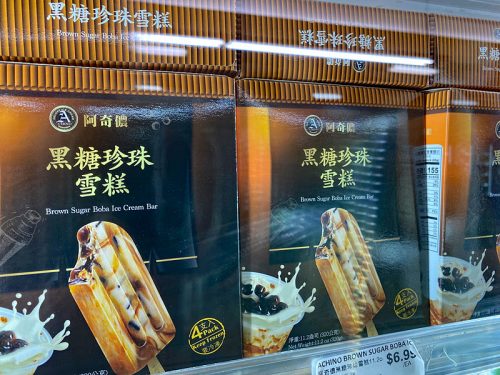
Michael Gebert shops and cooks and does interviews for his upcoming oral history of Chicago restaurants, and sometimes he writes something for Fooditor.
Latest
Join the Discussion
After you comment, click Post. If you're not already logged in you will be asked to log in or register with Disqus.




